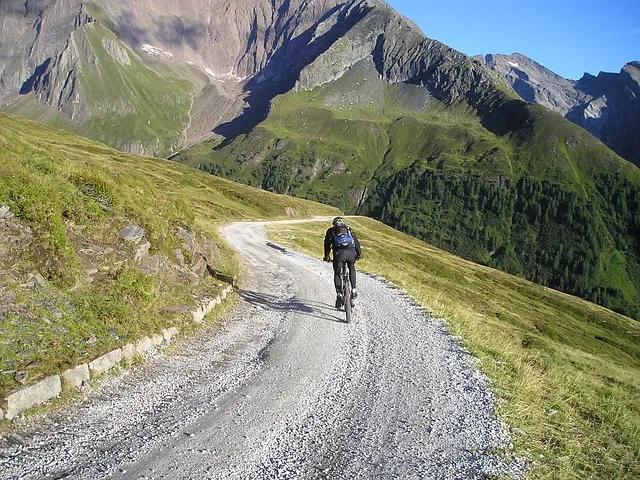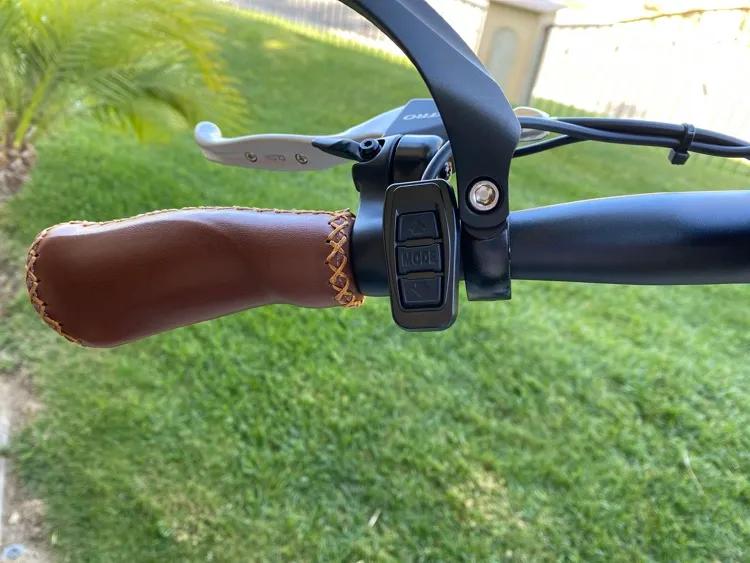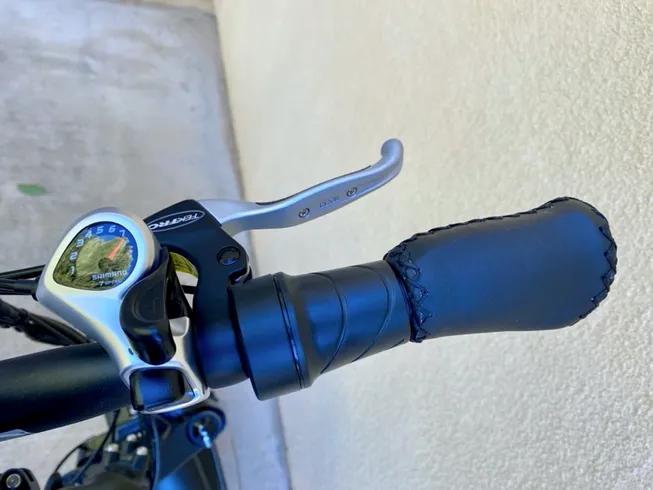How to use gears on an electric bike
For beginners, understanding why, when, and how to use gears on an e-bike can be a little tricky. They may have just made the mistake of avoiding shifting altogether and just using pedal assist, which will shorten battery life and put more stress on the brakes, among other issues.
On an e-bike, there are two sets of gears to change gears. On the left handlebar, change the electric gear by pushing the button up or down to increase or decrease the level of pedal assist you get. Use the shifter on the right handlebar to change the mechanical gear. This is usually done by moving or twisting with the thumb. Continue to pedal when changing gears.
Don’t just avoid gears because you don’t know how to use them or think they’re not even helpful because you’re riding an e-bike. There are many benefits to using left (pedal assist) and right gear, and beginner e-bike riders can learn how to shift effectively after a few rides.
Read on below and I’ll give you my own tips on how to use the gears (for example, when you don’t want to go downhill too fast).
Do e-bikes need gear? The benefits of using them
As you can see in the table below, there are more (and better) benefits to having and using gears than not having them.
Benefits of using gears:
Going uphill is easier
uphill faster
Downhill speeds are easier to control
Conserving battery power (and battery life)
Reduce brake wear
No need for such a powerful motor
Helps you get a great workout
Helps you maintain a consistent rhythm and tempo
Benefits of an e-bike without gears:
slightly less maintenance
easier ride
(Learn less!)
You can save money over an e-bike with gear
Benefits of owning and using gear
Most e-bikes (and their riders) require gears, even when using pedal assist and throttle. Shifting gears regularly will make it easier for you to go uphill, keep you from going downhill too quickly, and protect your brake pads and battery from wear and tear.
Another benefit of gears is that you can keep pedal assist levels low when using gears. When I start riding, I always add pedal assist when I need to go uphill. Also, since I live on and around a lot of hills, I drain the battery pretty quickly on the way up and put more pressure on the brakes on the way down. So you can reduce a lot of wear and tear on your e-bike by using a gear shifter.
You also need gear if you don’t have a powerful enough motor to go up hills easily. So if you have a 250-watt motor (as opposed to a 500-watt or even a 750-watt motor), you probably don’t have enough power to get you uphill in a reasonable amount of time.
Also, even riding on a small, steady slope will drain your battery very quickly, so you won’t be able to ride that far. Sure, you could use a lower level of pedal assist to protect your battery, but you might struggle to get up hills.
There’s another thing to love about shifting…if your battery is dead, even without the motor assist, shifting to a lower gear will help you pedal home. Also, if you want to protect the battery or give yourself more of a challenge, you can power off the battery and ride home in a lower gear.
Reasons You Might Not Need Gears
Interestingly, however, some e-bikes, either by choice or because they are less expensive models, may not have gears for shifting.
Electric bikes without gears have some benefits. A good reason for not having gears on an e-bike is that you intend to mostly cruise and/or rely on the motor and/or throttle to propel you forward when you need help.
If you plan to ride your bike almost exclusively for leisure and to avoid mountain climbing, it might make sense to buy an e-bike without gears. Your ride will be easy, you’ll save a small amount on maintenance and possibly the cost of the e-bike itself.
What’s the best way to use gears on an e-bike?
Learning how to shift gears isn’t just about where to find them on an electric bike or how to actually operate them. In fact, I haven’t used my gears for almost a month since I got the e-bike because I don’t think I need them and don’t know how to use them. But once I figured out how to use these gears, I couldn’t believe the difference I could ride more efficiently.
With a little practice and a bit of skill, using gears will also come naturally to you.
1. The first thing to understand is the gear numbering system: the lower the gear number, the easier it is to pedal and the faster you ride.
Again, the higher the gear, the less electronic assist you get. The tricky thing to remember is that if you shift into top gear, you’re basically not getting help from the gear itself.
While it’s not very intuitive, you’ll be able to get used to it in a few rides like I did. Unless I need more help, all that helps is keeping my gears on top (7 on an e-bike). As a beginner e-bike rider, this is a great way to start getting used to your electric and mechanical gears.
2. Next, you need to understand what kind of gears you have and how to replace them.
Find out what kind of gears you have and how they shift. In general, in addition to pedal assist, there are two types of gears that dominate e-bikes: Trigger Gears and Gripshift Gears. The first is usually a small paddle that is pushed with your thumb every time you change gears. The latter is a dial that you can rotate back and forth with your entire hand to change gears.
Both of these should be on the right handlebar. If you’re not sure what you’re looking at, check the manufacturer’s instruction manual.
3. Now your goal should be to learn how to change gears smoothly and efficiently.
Now that you want to move smoothly from one gear to another without stuttering and being unable to enter a gear, you should do two things:
First, only shift gears on the right when you pedal.
Second, you can only upshift or downshift one gear at a time. This will ensure that the chain moves up or down one cog at a time in unison. It will help you find the best gear for you right now.
Your goal is to ride at a regular rhythm (your pedaling does one full rotation at the same speed each time) and consistent effort.
How to Climb a Hill Using Gears on an Electric Bike: Downshifting
On an e-bike, it’s easy to assume that you can easily go uphill just by starting the motor. Just push a button and raise another pedal assist level, right? Now, as a beginner e-bike rider, you will be using the battery a lot, if. It’s fun for no other reason than that.
However, there are benefits to downshifting, especially when going uphill. Remember that “downshifting” on an e-bike means you’ll be lowering the numbers, but it’s easier to ride than with a higher number gear.
By lowering the right-hand gear, you will find it easier to go up hills without using more motor power. So you can save battery power for later when you get tired and when you get home. Downshifting is also helpful when you’re riding long, sustained inclines.
This is when you really start practicing your shifting skills…plan your shifts ahead of time, especially on steep hills. On long, sustained climbs, find a gear that allows you to spin all the way up quickly and comfortably.
So you don’t need to constantly change gears when going uphill. Instead, just find gear that you can pedal at a comfortable level throughout the climb. Of course, if the grade suddenly steepens, you can downshift to be consistent without increasing the pedal assist level. Once again, this is an opportunity to conserve battery power and battery life.
Another benefit of downshifting is that you can get a great workout by finding the right gear and the perfect level of pedal assist to climb hills. If exercising is your main goal while riding, then riding uphill is a great option.
You’ll probably just end up using a lower level of pedal assist, while shifting into a lower gear to maintain your rhythm and a smooth uphill ride. While you may not believe this when you start riding an e-bike, it may be faster than you think.
What I love about riding an e-bike is that you are more likely to challenge yourself when you know you can simply shift gears to make it easier when you absolutely need to!
How to Shift Downhill: Upshift
Uphill actually seems a lot easier than downhill thanks to downshifting. But let’s see why an “upshift” might be possible when going downhill on an e-bike.
Well, if you like speed, you might never consider trying to slow down a mountain, even a steep one. However, for most of us, self-preservation will prevail and we will want to brake. The problem with braking all the way downhill is that it wears down your brakes very quickly, and if you brake too hard and too suddenly, you could actually knock yourself off the bike.
This is why upshifting is useful and safe, especially on heavier e-bikes. When riding downhill with a 5% or 10% descent rate, you’re likely to stay in whatever gear you’re already using, especially on short descents. However, on a 15% or 20% drop, shifting into the highest gear (which is also the hardest or “slowest” gear) will make your speed a little more stable and make you feel more in control.
I ride a ton on the hills but like to be slow and in control on the downhills. Here’s an example of how I do this: My e-bike has 7 shifts. I keep the bike in 7th or hardest gear on any big drop. I combined this with actually turning off the left pedal assist gear (level 0) and found that I had more control downhill and I didn’t have to brake as much or hard.
Of course, I still use the brakes a lot on steep descents. You can learn more about calculating the steepness of a slope or descent here.
The truth is that on a heavy-duty e-bike, if you stay in a lower gear, you’re going to be moving very fast, and faster because the mass of the bike will make you move faster than a standard bike.
Practice using your e-bike gear with these 5 step-by-step tips
Follow these shifting steps to get a feel for your gear and learn how to shift efficiently. It’s a good idea for any beginner e-bike rider to practice shifting gears before a major ride, even if you’ve already practiced shifting gears on a standard bike. After all, e-bikes need to deal with extra motor power components and are generally heavier and faster.
Tip #1 – Practice using gears on a flat surface
Practice pedaling in a relatively flat straight line, then keep pedaling while using the right shifter to upshift or downshift. Continue to pedal throughout the entire shift. Shift up and down multiple times, but only once at a time.
Tip #2 – Ride at a consistent pace in every gear
Now practice riding at a consistent rhythm. Feel the change in pedal pressure after each shift. Notice how it makes pedaling harder or easier, or slower or faster. Practice maintaining the same pedaling speed as you go forward and keep changing gears.
Tip #3 – Practice using the left pedal assist
Now switch back to the hardest gear so you can safely practice changing left pedal assist. This is where you can pick up speed quickly, so keeping your e-bike in the far right gear will give you more control when you’re just starting out.
You should start with the lowest level of pedal assist. So once you’re driving on straight roads (away from cars and other moving objects), push the pedal assist button to level 2. Continue to pedal at a consistent rhythm while carefully increasing the pedal assist level. Get used to each speed before moving on to the next level.
Tip #4 – Downhill and Uphill
Once you are comfortable with shifting on a flat surface, then try going uphill. Shift into an easier (lower) gear before going uphill and plan ahead for the hill. Then when you start going uphill, continue to shift into lower gears as needed.
When you start to struggle a little, change the left pedal assist to a higher level. Continue increasing levels as needed to successfully ascend the hill.
Tip #5 – Upshifting Downhill
Now you’re ready to go downhill. Shift your right-hand gear to the highest (hardest) position before going down the mountain. By planning ahead, you can slow down your bike considerably before going down.
Then, change your left pedal assist to the lowest assist level (one) before you start the next small incline. If you are going down a steep hill, switch the gear to the “0” or “off” position. You don’t get any motor assistance to propel you forward, which will give you more control over the speed of the e-bike.
However, since you’re no longer getting any power assist, you probably don’t want to switch to level zero too soon, or you’ll have a hard time continuing to pedal before going downhill. However, you won’t need any pedal assist once you’re down a steep hill.
Conclusion: Learning how to use gears on an e-bike will make riding easier and more efficient.
Whether you’re new to cycling or just starting out on an e-bike, learning how to shift gears on an e-bike will help you ride more comfortably and efficiently. Not only will you be able to climb hills and ride longer distances more easily, but you will also save battery power and overall life, and protect your brakes from extra wear.
Efficient shifting will also improve the quality of your workout on the e-bike and your control over speed and cadence.
Our factory provide OEM and ODM,if you are interested in our electric bike, you can log on our official website to know more about details. If you have any query or electric bicycle transportation problem,please feel free to contact us and we will contact you APSAP. https://gzdlsdz.en.alibaba.com/
Please Leave us an inquiry.We are looking forward to your arrival.
 Shuangye ebike
Shuangye ebike



